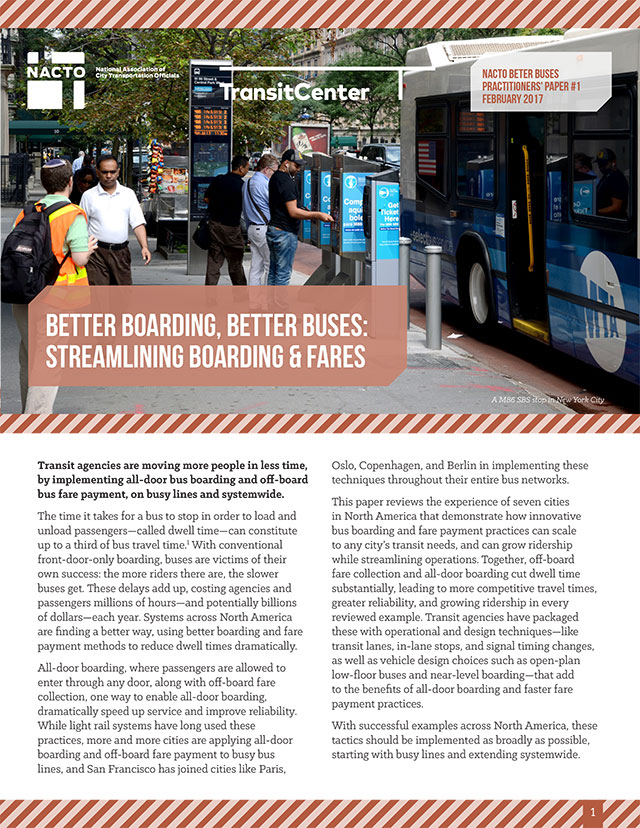Transit agencies are moving more people in less time, by implementing all-door bus boarding and off-board bus fare payment, on busy lines and system-wide.
 The time it takes for a bus to stop in order to load and unload passengers—called dwell time—can constitute up to a third of bus travel time. With conventional front-door-only boarding, buses are victims of their own success: the more riders there are, the slower buses get. These delays add up, costing agencies and passengers millions of hours—and potentially billions of dollars—each year. Systems across North America are finding a better way, using better boarding and fare payment methods to reduce dwell times dramatically.
The time it takes for a bus to stop in order to load and unload passengers—called dwell time—can constitute up to a third of bus travel time. With conventional front-door-only boarding, buses are victims of their own success: the more riders there are, the slower buses get. These delays add up, costing agencies and passengers millions of hours—and potentially billions of dollars—each year. Systems across North America are finding a better way, using better boarding and fare payment methods to reduce dwell times dramatically.
All-door boarding, where passengers are allowed to enter through any door, along with off-board fare collection, one way to enable all-door boarding, dramatically speed up service and improve reliability. While light rail systems have long used these practices, more and more cities are applying all-door boarding and off-board fare payment to busy bus lines, and San Francisco has joined cities like Paris, Oslo, Copenhagen, and Berlin in implementing these techniques throughout their entire bus networks.
This paper reviews the experience of seven cities in North America that demonstrate how innovative bus boarding and fare payment practices can scale to any city’s transit needs, and can grow ridership while streamlining operations. Together, off-board fare collection and all-door boarding cut dwell time substantially, leading to more competitive travel times, greater reliability, and growing ridership in every reviewed example. Transit agencies have packaged these with operational and design techniques—like transit lanes, in-lane stops, and signal timing changes, as well as vehicle design choices such as open-plan low-floor buses and near-level boarding—that add to the benefits of all-door boarding and faster fare payment practices.
With successful examples across North America, these tactics should be implemented as broadly as possible, starting with busy lines and extending system-wide.
Download Whitepaper (PDF) >
NACTO Transit Street Design Guide >

This paper was made possible thanks to a grant from TransitCenter.